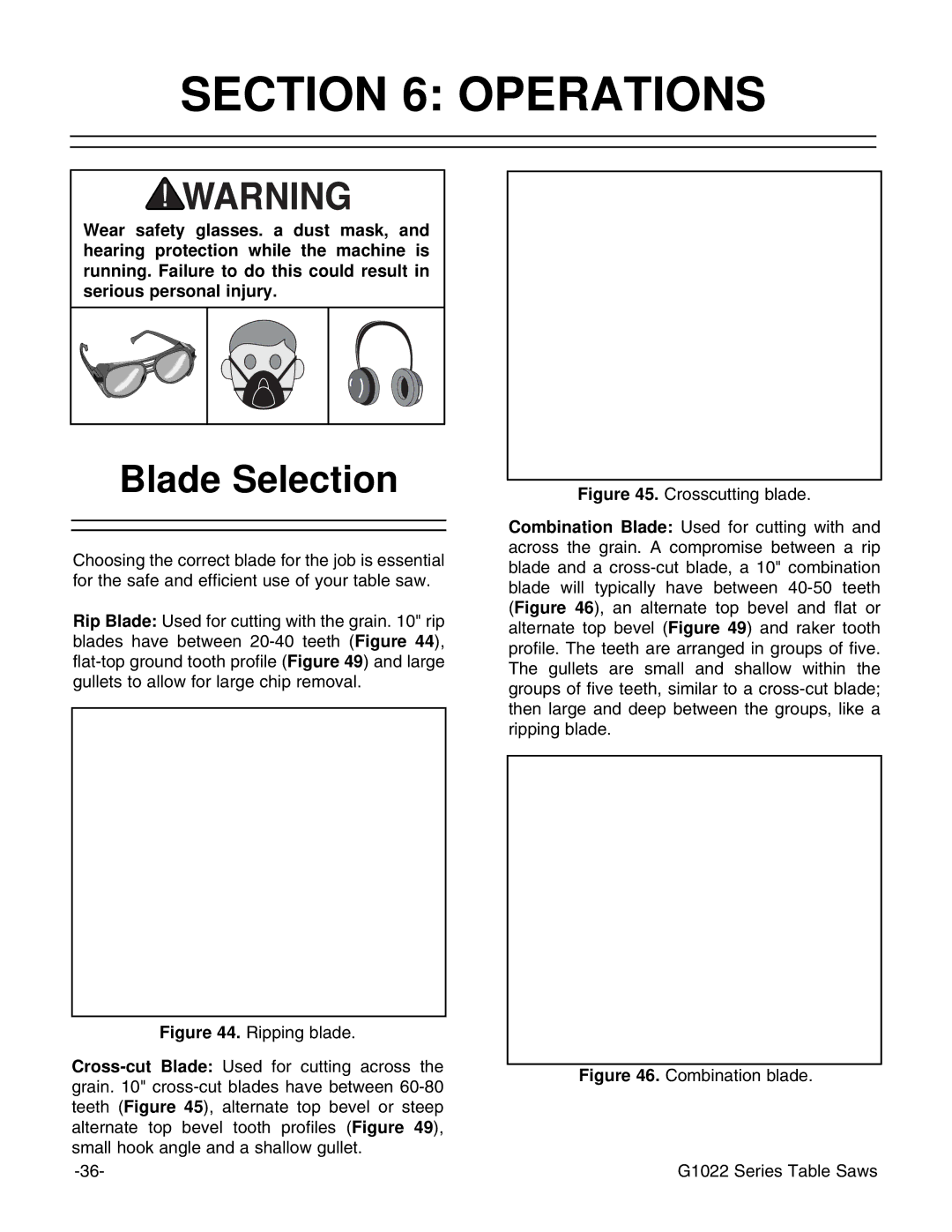SECTION 6: OPERATIONS
Wear safety glasses. a dust mask, and hearing protection while the machine is running. Failure to do this could result in serious personal injury.
Blade Selection
Choosing the correct blade for the job is essential for the safe and efficient use of your table saw.
Rip Blade: Used for cutting with the grain. 10" rip blades have between 20-40 teeth (Figure 44), flat-top ground tooth profile (Figure 49) and large gullets to allow for large chip removal.
Figure 44. Ripping blade.
Cross-cut Blade: Used for cutting across the grain. 10" cross-cut blades have between 60-80 teeth (Figure 45), alternate top bevel or steep alternate top bevel tooth profiles (Figure 49), small hook angle and a shallow gullet.
-36-
Figure 45. Crosscutting blade.
Combination Blade: Used for cutting with and across the grain. A compromise between a rip blade and a cross-cut blade, a 10" combination blade will typically have between 40-50 teeth (Figure 46), an alternate top bevel and flat or alternate top bevel (Figure 49) and raker tooth profile. The teeth are arranged in groups of five. The gullets are small and shallow within the groups of five teeth, similar to a cross-cut blade; then large and deep between the groups, like a ripping blade.
Figure 46. Combination blade.
G1022 Series Table Saws

